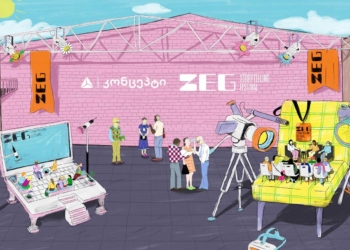The FINANCIAL — The share of young people aged 16-29 living with their parents in 2017 was 68.2 % in the EU-28. For young men the share was 73.3 %, while for young women it was 62.9 %, a gap of 10.4 percentage points.
In every EU Member State, the proportion of young women living in the parental home was lower than that of young men. The largest gender gaps were observed in Bulgaria (19.3 percentage points (pp)) and Romania (17.2 pp), while the lowest were recorded in Spain (5.7 pp), Sweden (4.7 pp) and Malta (4.6 pp).
The largest shares of young men living with their parents were recorded in Croatia (93.1 %), Slovakia (89.2 %), Italy (88.3 %) and Malta (87.0 %), while for young women the largest shares were recorded in Malta (82.4 %) and Croatia (82.3 %). The lowest percentages for both sexes were recorded in Finland (40.8 % for young men and 30.1 % for young women) and Denmark (39.5 % for young men and 31.9 % for young women).
Young people at risk of poverty or social exclusion
The indicator concerning the share of the population at risk of poverty or social exclusion is based on three indicators: the at-risk-of-poverty rate, the severe material deprivation rate and the share of households with very low work intensity. People at risk of poverty or social exclusion are defined as people who are in at least one (but possibly two or all three) of these situations.
In 2017, the at-risk-of-poverty or social exclusion rate for young people aged 16-29 years was 27.7 % in the EU-28, corresponding to about 21.8 million young people. The share of young people at risk of poverty or social exclusion decreased by 1.0 percentage points between 2007 and 2009, increased by 4.0 percentage points between 2009 and 2014 (note the change from EU-27 to EU-28 during this period) and then declined again by 2.0 percentage points between 2014 and 2017.
Young women (aged 16-29 years) had slightly higher at-risk-of-poverty or social exclusion rates than young men throughout the period shown, although the gender gap was narrowest in 2015 where the rates differed by just 0.1 percentage points. The latest rates show a gender gap of 0.8 percentage points, with a rate of 28.1 % for young women and a rate of 27.3 % for young men. For comparison, in 2007 and 2008 the gender gap had been 2.1 percentage points. In 2017, the rate for young men was 1.7 percentage points higher than it had been in 2007 while for young women the difference was an increase of 0.4 percentage points.
It can be seen that in 2017 women aged 16-29 had higher at-risk-of-poverty or social exclusion rates than men of the same age in 17 EU Member States, with the difference being highest in the United Kingdom (4.1 percentage points; 2016 data), followed at some distance by Spain (3.3 percentage points), Slovenia (3.2 percentage points), Germany (3.1 percentage points), Estonia (3.0 percentage points) and Ireland (2.9 percentage points; 2016 data).
In Lithuania and Portugal the rates were the same for young men and for young women, while in the remaining nine Member States, young women had lower at-risk-of-poverty or social exclusion rates than men; the biggest differences were observed in Bulgaria (5.5 percentage points) and Malta (4.7 percentage points). Serbia also recorded a large difference, with the rate for young women 4.3 percentage points lower than for young men (2016 data).































Discussion about this post